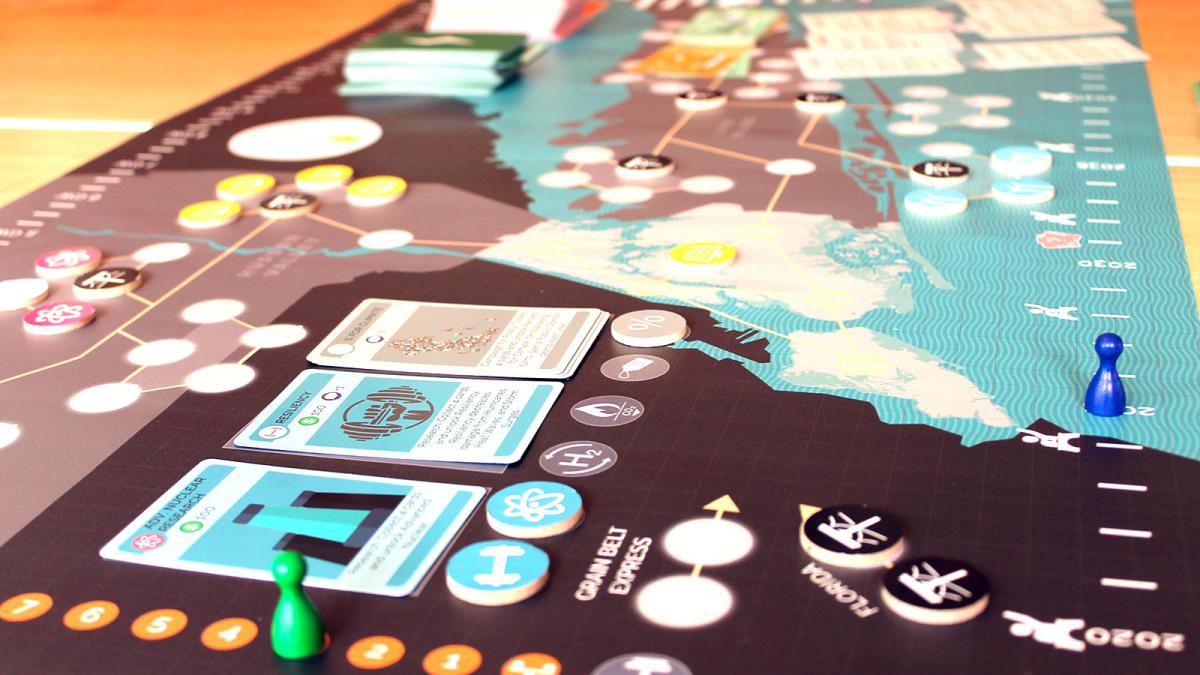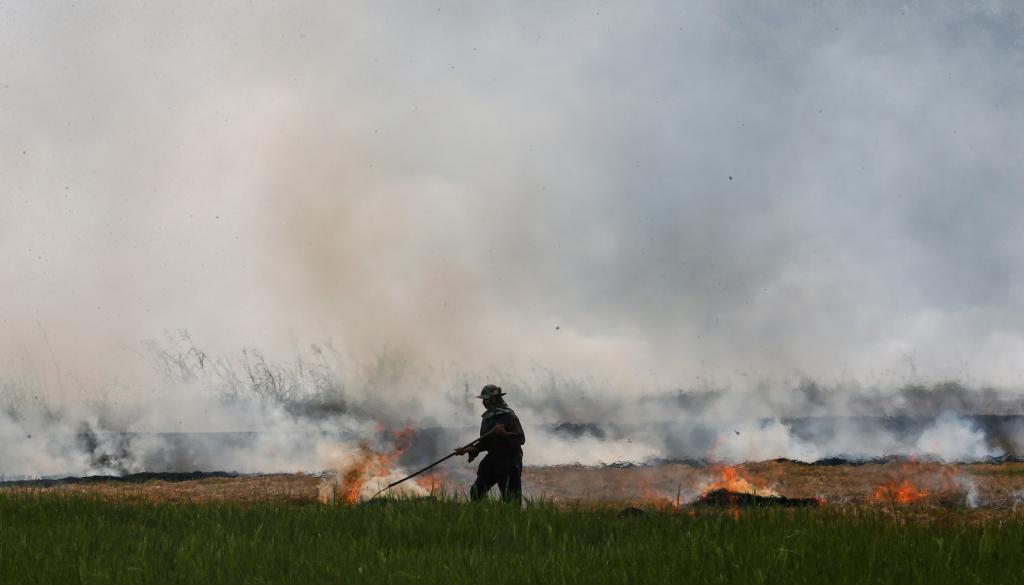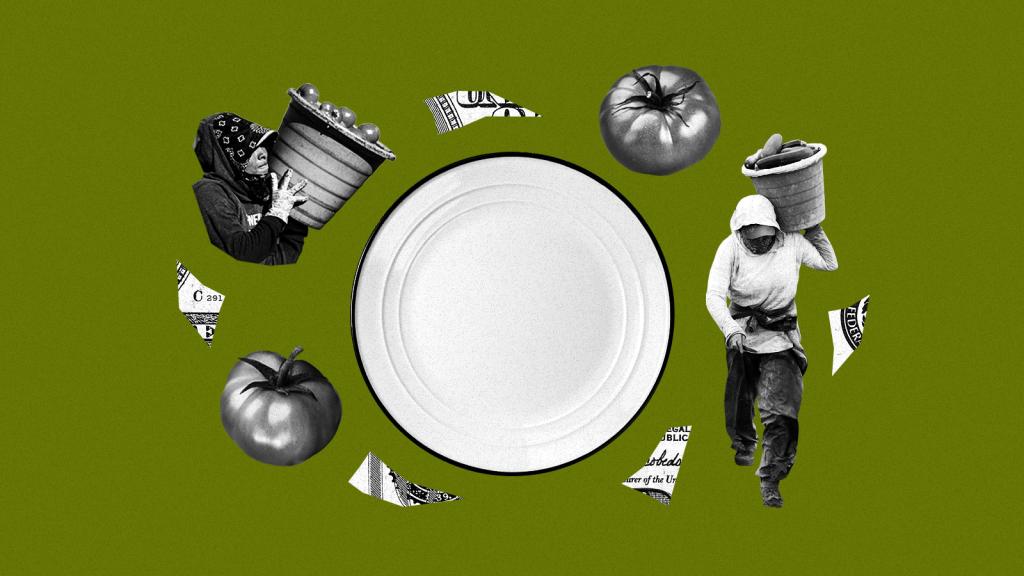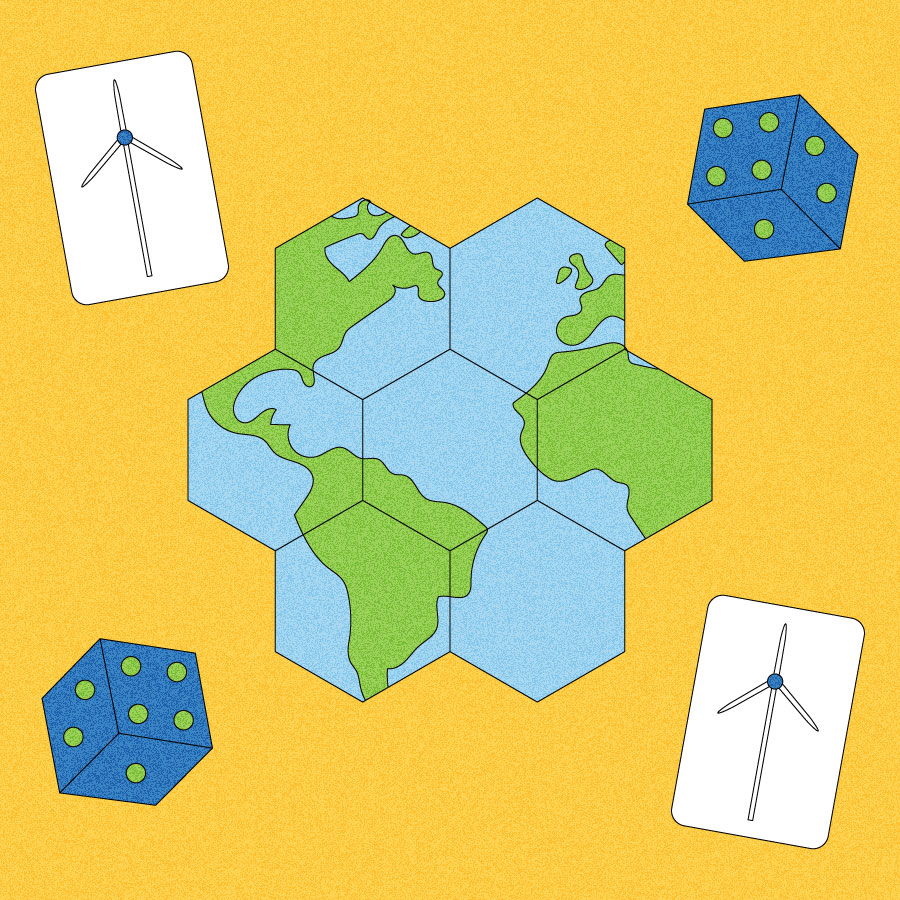
The spotlight
On a balmy Seattle evening in June, four climate journalists walk into a bar. I’m one of them, with a cardboard box — the reason for our gathering — tucked under one arm. Inside it is the just-released climate twist on a classic board game, Catan: New Energies.
We’re all long-standing fans of the cult favorite that it’s based on, and we’re curious about this new version of Catan, in which players balance renewable energy and fossil fuels on the fictitious island. But our true mission is to find out whether a board game about clean energy can actually be fun — and whether that might get more people talking about climate change, which scientists and advocacy organizations suggest is a precursor to climate action. We order our pints, crack open the plastic-free packaging, and begin to play.
![]()
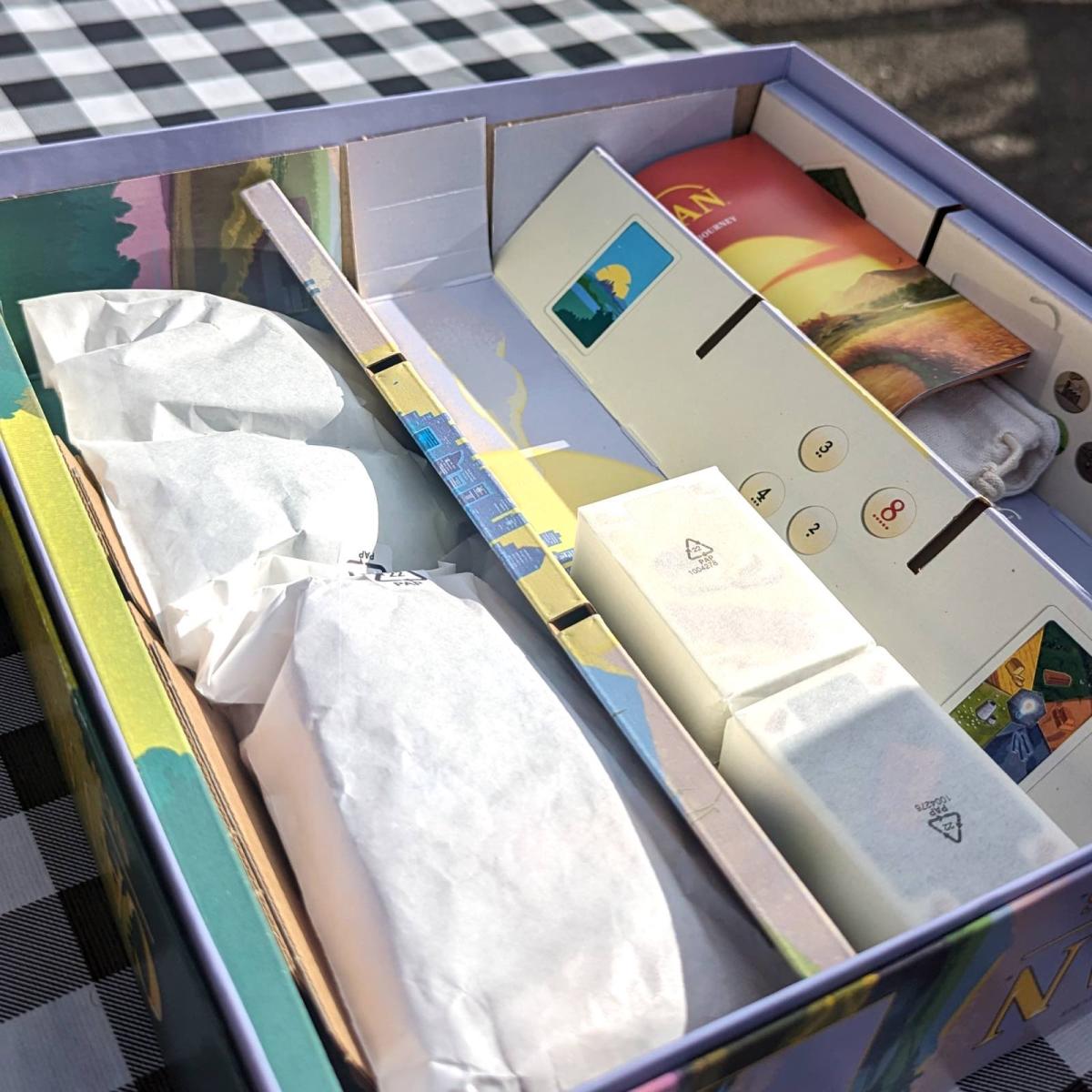
Unboxing the New Energies game. Game pieces come wrapped in paper, rather than plastic. Grist / Sachi Kitajima Mulkey
The original game on which New Energies is based was released in 1995 as Settlers of Catan. It has sold more than 40 million copies worldwide and is available in over 40 languages. In 2015, the company dropped “settler” from the name, but the game has still drawn criticism for perpetuating a narrative of resource extraction and colonialism.
Designed for 3 to 4 players, it features a novel hexagonal map of colorful tiles, each representing a different type of land that can give the player a corresponding resource. During their turns, players can barter and swap resources to try to get what they need to build towns and roads. Throughout the couple of hours it takes to play, these negotiations can become lively, even heated — probably the only modern context in which many of us have squabbled over sheep.
Released on June 14, New Energies is the latest standalone addition in the extensive Catan universe. It was inspired by a fan-made expansion called Oil Springs, which got an official release in 2011 and added a fossil fuel mechanic to the base game.
Benjamin Teuber, son of the original designer Klaus Teuber, said that, at first, it was challenging to squeeze realistic energy and pollution dynamics into a relatively short game. To make sure they got it right, the family consulted with one of the original designers of Oil Springs, sustainability researcher Erik Assadourian.
“Like my dad always used to say, it must be fun — otherwise the best message won’t be experienced,” Teuber said. “But we have to acknowledge and to respect the fact that we have a very complex topic, such as climate change, reduced to something playable.” After over a decade of making games together, New Energies was the family’s last collaboration before Klaus passed away in 2023.
![]()
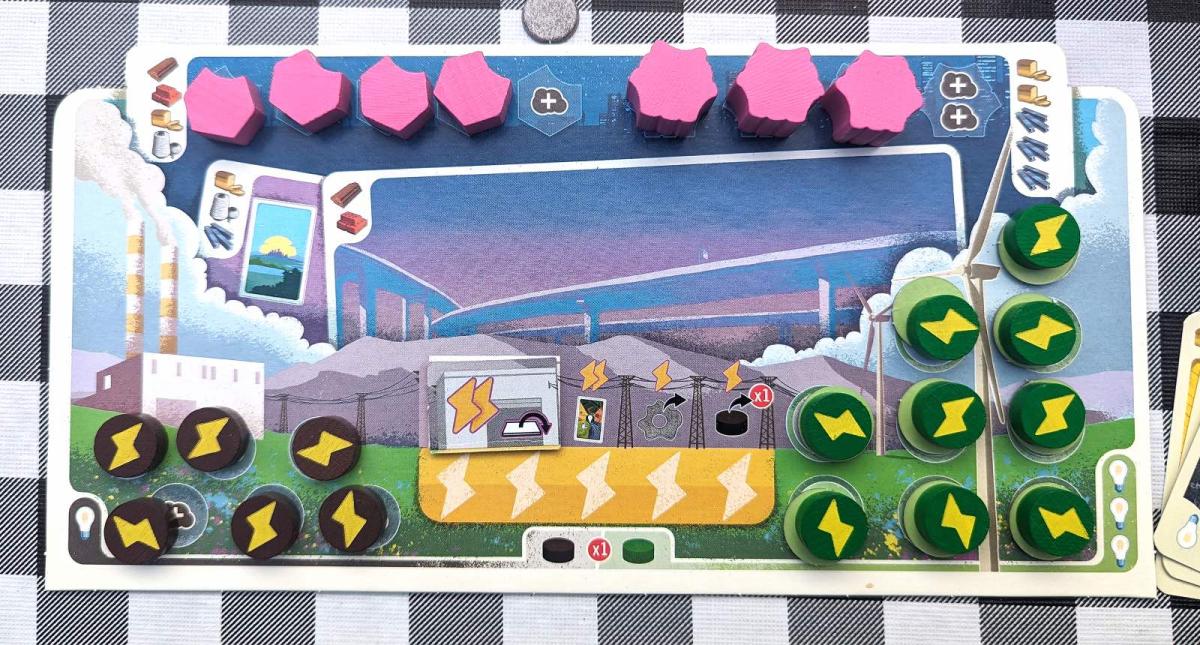
“Local footprint” scorecards, on which each player balances fossil fuels and clean energy, are a novel element in New Energies. Grist / Sachi Kitajima Mulkey
The game has company on climate-themed shelves: Titles like Daybreak, CO2: Second Chance, and Tipping Point all challenge players to take on the compounding effects of manmade planetary warming and defeat it with clean, green ingenuity.
“It’s just more evidence that people have climate change at the top of their minds now,” said Dargan Frierson, an atmospheric sciences professor at the University of Washington, who leads Earth Games, a climate game design group on campus. Even though people are often hesitant to talk about climate change — according to a 2022 report, 67 percent of Americans “rarely” or “never” discuss it with friends and family — they really want to, he said. “There’s demand for ways to think about it, deal with it, in fun ways.”
In 2022, the Environmental Game Design Playbook was released to guide creators who want to meet that demand. Daniel Fernández Galeote, a gamification researcher and playbook contributor, says that games can offer an interactive education in climate topics. “It’s experimenting with them in a safe environment, and having this sort of social contract with other people to discuss and reflect together,” he said. “Games can be very good conversation starters.”
These games and the conversations they spark could also inspire action. A 2017 paper found that playing the Catan Oil Springs expansion shifted players toward more sustainable actions. Social psychologists call this bridging the “intention-behavior” gap — what takes people from beliefs or goals to actual behavior change.
![]()
Of course, for a game to spark conversation, people need to try it first. For casual players, the setup of New Energies may be a tad overwhelming. All told, there are roughly a dozen new components, and even for my group of Catan-savvy colleagues, getting ready to play came with a steep learning curve. Thankfully, our small crew included a focused “rules guy” — an essential role for any successful game night.
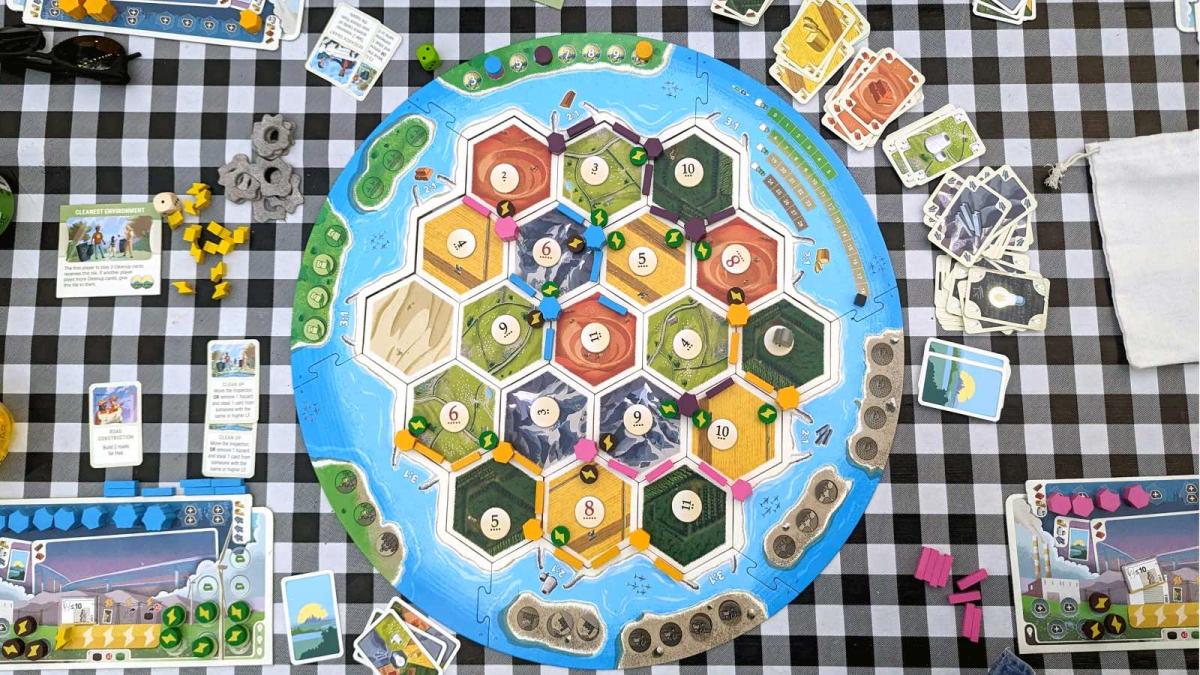
A view of the New Energies board, and all its accoutrements, at the end of a game. Grist / Sachi Kitajima Mulkey
As our rules guy instructs, each turn starts by pulling an “event token” blindly from a bag, which can fill up meters on the board to trigger events like air pollution, floods, and climate conferences. In a rhythm familiar to Catan old-hats, we roll dice, collect resources, and build, while juggling new elements like energy and science.
The game starts with the assumption of a world embedded in polluting industries; it’s faster and cheaper for players to build fossil fuels than renewables. But as players build more renewable energy, they are rewarded with higher odds of “green events” and lower pollution.
Following Teuber’s belief that planetary warming should be an issue beyond politics, the game takes a stab at neutrality and avoids the words “climate change.” Instead, Kelli Schmitz, the director of brand development at Catan Studio, said the game aims to normalize renewable technologies. “It takes the controversy out of it,” she said.
Like the original Catan, players still win by being the first to collect 10 victory points, whether by fossil fuel or green energy means. “It’s important to enable people to win the game playing fossil fuels, because that is also something that is happening in the real world,” Teuber said. But it’s also possible for the game to end early with a maxed-out pollution meter, or when climate event tokens run dry. In these scenarios, the player with the lowest carbon footprint becomes the winner by default.
“The person who invested the most in green energy, we determined that person to be the natural leader,” Teuber said.
![]()
Like the majority of people, I find that the subject of climate change begets anxiety and, outside of work, I tend to avoid the subject. But as we play, the group begins to quip over the same gut-wrenching topics that are common in our newsroom. We giggle as we move around the “environmental inspector” (the new name for the resource-blocking robber of the original game), revel at the clean energy spoils of governmental funding, and cheer at the start of each climate conference event.
In the weeks since its official release, I’ve revisited the island of Catan and its “new energies” repeatedly. Each time, I’ve had to convince a group to take the journey with me — a trust fall on the promise of fun. And each time, we chatter our way to a renewable energy victory.
— Sachi Kitajima Mulkey
More exposure
- Read: a 2020 roundup of climate-themed board games, reviewed by Grist staffers (including yet another Catan expansion: Crop Trust)
- Read: more about the growing genre of environmental board games, and the lessons they offer (The Guardian)
- Read: about the increasing demand for climate themes in video games (The Nation)
- Play: a solo climate game published by the Financial Times, in which you navigate prompts with the objective of reaching net zero by 2050
A parting shot
This isn’t Grist’s first time testing out a clean energy board game. In 2020, then-Grist staff writer Nathanael Johnson gathered a group of climate professionals to play a new cooperative board game called Energetic, developed by the nonprofit City Atlas. In the game, pictured below, players take on different roles and work together to build a clean energy supply to power New York state before 2035.
